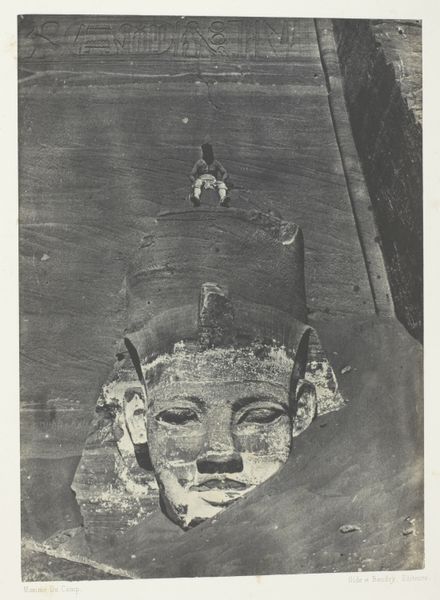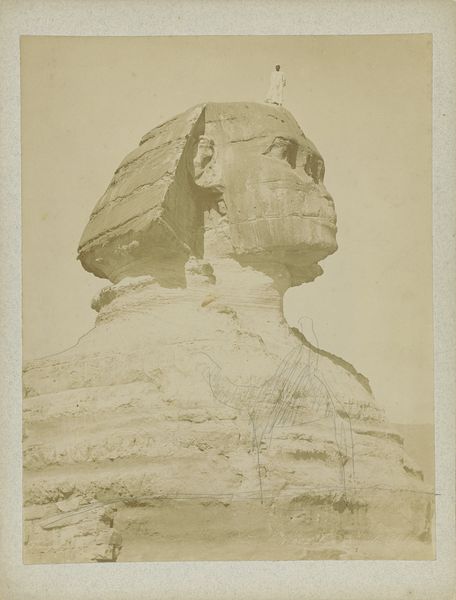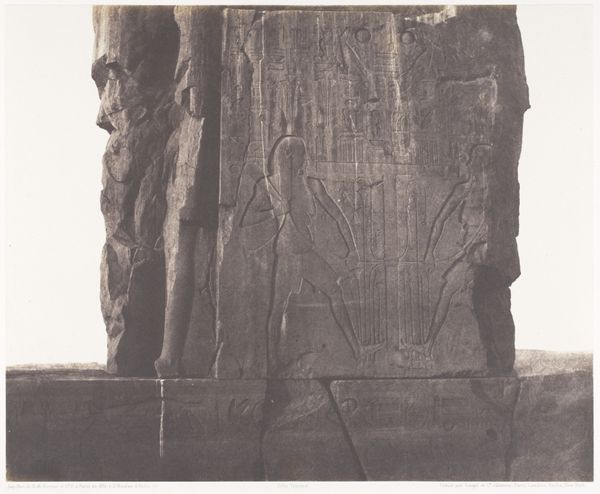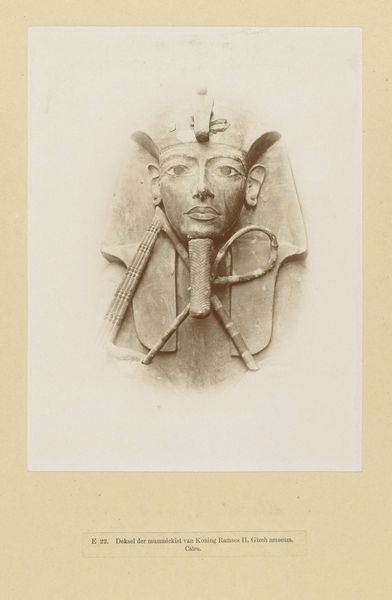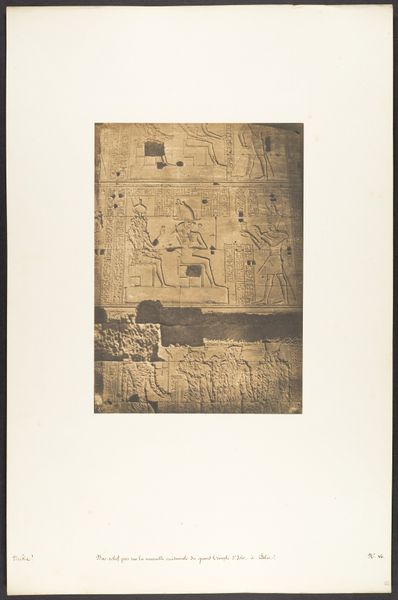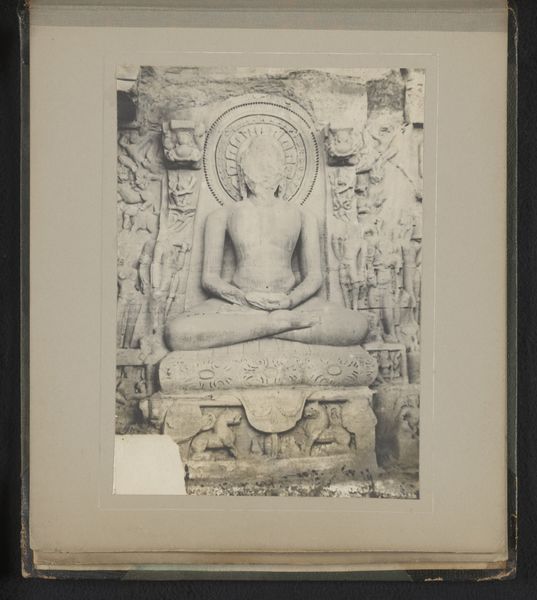
Westernmost Colossus of the Temple of Re, Abu Simbel 1850
0:00
0:00
photography, albumen-print
#
landscape
#
ancient-egyptian-art
#
photography
#
ancient-mediterranean
#
orientalism
#
cityscape
#
albumen-print
Dimensions: Image: 9 in. × 6 1/2 in. (22.8 × 16.5 cm) Mount: 18 11/16 × 12 5/16 in. (47.5 × 31.2 cm)
Copyright: Public Domain
Curator: This is Maxime Du Camp's photograph, "Westernmost Colossus of the Temple of Re, Abu Simbel," taken around 1850. It's an albumen print, a very common photographic process at the time. Editor: The sheer scale is what strikes me first. Look at that figure perched atop the statue's head. It really highlights the monumentality. Curator: Exactly! Du Camp, like many early photographers in Egypt, was documenting these ancient wonders for a European audience, showcasing the power and grandeur of Pharaonic civilization. Think about how photography was changing the way people perceived the world at this time. Suddenly, ancient sites could be disseminated in great numbers to a global audience. Editor: And let's consider the making of the image itself. The albumen process, the transportation of heavy equipment…it speaks volumes about the labor and investment required to capture this. We're seeing the beginning of cultural tourism here, a moment that simultaneously preserves and transforms the perception of these sites. Curator: Absolutely. The photograph itself becomes part of the narrative, reflecting European interests and colonial undertones of the era. It makes you think about who has access to history, and how that access shapes the present. Editor: I agree. The figure placed at the very top makes me wonder, did Du Camp carefully direct this image for dramatic impact and for future circulation? I notice a sort of sandy color tone which reinforces a romantic vision of ancient landscapes that were also desired in decorative arts at this time. Curator: Indeed, photographs like this fueled the Orientalist imagination, catering to European fascination with the "exotic" Near East. We should consider, also, the ethical implications. Who was profiting from these images, and what were the impacts on local communities? Editor: I'm thinking about what it takes to produce these prints, all that mixing of chemicals and prepping glass plates in the sun...it makes it tangible somehow. Curator: It provides a tangible reminder of how cultural understanding can be both deepened and distorted by the act of image-making itself. Editor: Definitely. And remembering the labor and materials used helps bring a sense of grounded understanding that also inspires curiosity and further thought.
Comments
No comments
Be the first to comment and join the conversation on the ultimate creative platform.
